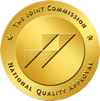Well, here we are. You’ve decided to embrace sobriety, and we are here to tell you it’s not only possible but also potentially the best decision you’ve ever made. Yes, it’s daunting, like climbing a mountain. But with the right tools and mindset, you’ll be amazed at what you can achieve. Every journey is unique, but here is one path down the road of “how to get sober.”
How to Get Sober: Understanding Addiction
When we talk about how to get sober, starting with information is the best place. So, let’s get a grip on what addiction is. Imagine your brain as a dance floor where dopamine—the feel-good neurotransmitter—throws the wildest parties. When you use substances, dopamine floods the dance floor, and everything feels spectacular.
However, over time, your brain craves more of that dopamine rush, and before you know it, you’re stuck in a cycle where the substance is the DJ, and you’re just trying to keep up. (Here’s more on addiction as a disease understanding.)
Sobriety, then, is about kicking that DJ out and learning to enjoy the dance floor without artificial stimulation. But how do we do that? Let’s break it down.

Step One: Acknowledge the Addiction Problem
Here’s the hard truth: admitting you have a problem is tough. It’s like staring into a mirror and seeing a stranger. But honesty is the cornerstone of sobriety. Without acknowledging the issue, you can’t start to address it.
Here’s the short list of signs of addiction:
- Increased Tolerance: Needing more of the substance to achieve the same effect.
- Withdrawal Symptoms: Experiencing physical or emotional symptoms when not using the substance.
- Unsuccessful Attempts to Quit: Trying to stop or cut down, but not being able to.
- Neglecting Responsibilities: Failing to meet work, school, or home obligations.
- Loss of Interest: Losing interest in activities once enjoyed.
- Continued Use Despite Problems: Using the substance even though it causes problems in your life.
- Time Spent: Spending a lot of time getting, using, or recovering from the substance.
- Cravings: Having strong urges or cravings to use the substance.
So, if you have a few of these in play, take a deep breath, look yourself in the eye, and say, “I need help.” This step is crucial, as it sets the stage for everything that follows.
Step Two: Seek Professional Help
Sobriety isn’t a solo venture. You need a team. This includes therapists, counselors, and support groups. They provide the expertise and camaraderie essential for recovery. Think of them as your backup, ensuring you are covered when times get sticky.
Professional help also means having access to medically supervised detox if necessary, which is vital for your safety and well-being.
Step Three: Create a Support Network
Friends, family, and fellow sober warriors form your support network. These are the folks are the essence of how to get sober. They will cheer you on, pick you up when you stumble, and remind you why you started this journey.
Building this network is like creating a safety net. It catches you when the tightrope of sobriety feels wobbly. Surround yourself with people who genuinely care about your well-being and who understand the challenges you face.
Step Four: Embrace New Habits
One of the biggest challenges in how to get sober is learning to fill the void left by substances. Here’s where hobbies and healthy habits come into play.
Exercise, for instance, is a fantastic way to boost those endorphins and keep your body busy. Yoga, running, or even brisk walks can work wonders. Additionally, explore creative outlets like painting, writing, or playing an instrument.
These activities not only distract your mind but also provide a sense of accomplishment and purpose.
Step Five: Understand and Manage Triggers
Triggers are those sneaky little things that make you want to reach for a drink or a hit. They can be anything from stress at work to social gatherings. Identifying these triggers is the first step; managing them is the next.
This might involve avoiding certain situations initially, practicing mindfulness, or developing new coping strategies. Remember, it’s about progress, not perfection.
Step Six: Celebrate Milestones
Sobriety is hard work, and every step forward is a victory worth celebrating. Whether it’s a day, a month, or a year, acknowledge your achievements. Treat yourself to something special, share your success with your support network, and take a moment to reflect on how far you’ve come.
These celebrations are not just about the milestones themselves but also about reinforcing your commitment to a sober life.
Step Seven: Stay Educated
Knowledge is power. Stay informed about addiction and recovery by reading books, attending workshops, or joining online forums. The more you understand about the nature of addiction and the science behind it, the better equipped you’ll be to navigate your journey.
This ongoing education helps to demystify the process and provides you with the tools to handle challenges that arise.
Moving Forward in How to Get Sober
Ultimately, sobriety is about reclaiming your life and rediscovering joy in the everyday moments. It’s about waking up with a clear mind, building meaningful relationships, and pursuing passions you may have set aside.
The road ahead will have its bumps, but with honesty and a solid support system, you can navigate it successfully.
Final Step: Find the Right Addiction Treatment Center Near You
If you’re ready to start your journey to sobriety and need a supportive team by your side, EagleCrest Recovery is here to help. Call us today at 844-439-7627 to take the first step towards a healthier, happier life.
Our dedicated professionals are ready to guide you through every stage of recovery with compassion and expertise. Don’t wait—reach out now and begin your path to lasting sobriety.


